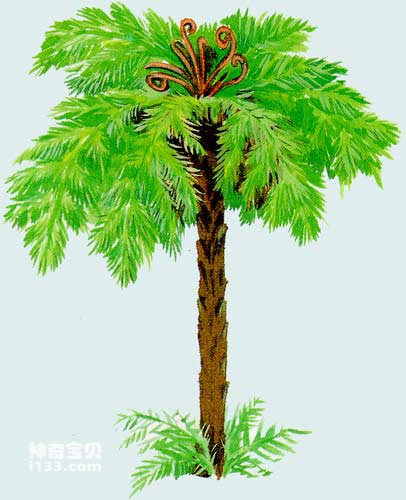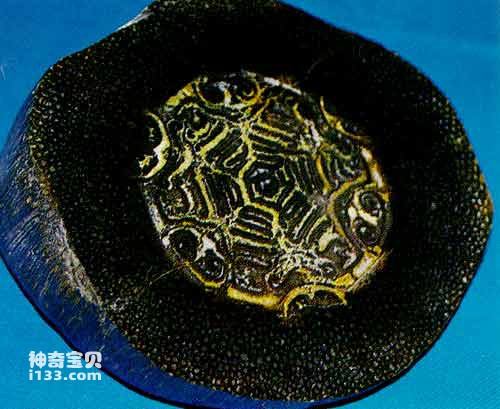The leaves of modern ferns all look like sheep's teeth, so the earliest scientists who studied them called them "ferns". In the development of the earth's natural history, these "ferns" were actually the earliest higher plants, and they had begun to appear on land in the late Silurian period.
These earliest terrestrial ferns were known as Acrophysalis or Phytophthora phoenix. After that, ferns divided into two branches, one of which developed from the worker ferns during the transition from Silurian to Devonian to the later lycophytes; the other branch developed from the naked ferns in the early Devonian to the later knotted ferns. (also called horsetail or cuneiform) and true fern. In addition, there is also a type of plant called Rini fern found in the Devonian period. They have vascular bundles like higher plants, but also have no stomata like lower plants. Therefore, it is still difficult to determine their true systematic classification status. .
In the Late Devonian, the naked ferns that flourished in the Early and Middle Devonian gradually became extinct and disappeared, but the lycophytes, knotted ferns and true ferns began to flourish. These evolved ferns have differentiated into roots, stems, and leaves: the roots can stabilize the plant body and penetrate deep into the soil to absorb more water and minerals; the stems enable the plant body to stand upright on the one hand. More importantly, the formation of its internal vascular bundle structure creates a more complete conduction system for the plant to facilitate the transportation of nutrients; the leaves become organs specialized in photosynthesis, and their greatly increased surface area makes the plant The body can absorb more energy from sunlight. For this reason, ferns decorated the "Earth Garden" with extraordinary beauty in the late Paleozoic Era.

scale wood
There are still more than 10,000 species of ferns living on the earth today, most of which are herbs. However, in the Carboniferous and Permian periods of the Paleozoic Era, among the ferns, the scalewoods belonging to the lycophyte group and the reedwoods belonging to the knot fern group were both tall tree-type woody plants.
Lepidoptera can reach a height of 30 to 40 meters, and the diameter of the tree body can reach 2 meters; their trunks are bifurcated like the naked fern; the narrow leaves can be up to 1 meter long, with obvious midribs on the leaves; the leaves are spiral They are arranged in a shape on the trunk and grow on the leaf seats at the base; the leaf seats protrude from the surface of the trunk and are generally diamond-shaped. Because they are arranged in a spiral shape, when the leaves fall off, they look like scale-like impressions, which is why scale wood is Got its name.
Reed grows in swamps, reaching a height of thirty to forty meters, with a trunk diameter of up to 1 meter, and leaves whorled on the nodes of the branches. The leaves of reed wood have different origins from those of lepidoptera. They are changed from small branches.

Hexagonal wood trunk cross section
True ferns are more adaptable to terrestrial life than lycophytes and knotty ferns. Their leaves are larger, flat and divided into upper and lower sides, with many leaf vein branches, which further expands the area and efficiency of photosynthesis. True ferns generally live on land, a few live in swamps, and some grow on several branches of other plants. Among true ferns, tree ferns that lived from the end of the Carboniferous to the beginning of the Permian had large crowns and dense forests. From the late Early Permian to the early Late Permian more than 200 million years ago, a tree fern called Hexagona was distributed in Yunnan and several other provinces in southern and southwest my country. It was more than ten meters tall and had a trunk The diameter is more than 20 centimeters, and the pinnately compound leaves are very large, two or three meters long. The stems of Hexagona have very developed conductive and mechanical tissues. On the cross section of the trunk, you can see the outer cortex and extremely complex vascular bundles that make up the middle column (the central axis of the root and stem). The vascular bundle is about 10 centimeters in diameter and consists of seven concentric rings, the innermost one being circular and the rest being strip-shaped. Therefore, the cross section of such a tree trunk looks like a colorful hexagon, which is the origin of the name "hexagonal glow wood".
The great development of ferns contributed to the emergence of primeval forests for the first time in the history of the earth, which caused tremendous changes in the overall appearance of the earth's ecosystem and laid the material foundation for vertebrates to move from water to land.
animal tags: Ferns
We created this article in conjunction with AI technology, then made sure it was fact-checked and edited by a Animals Top editor.